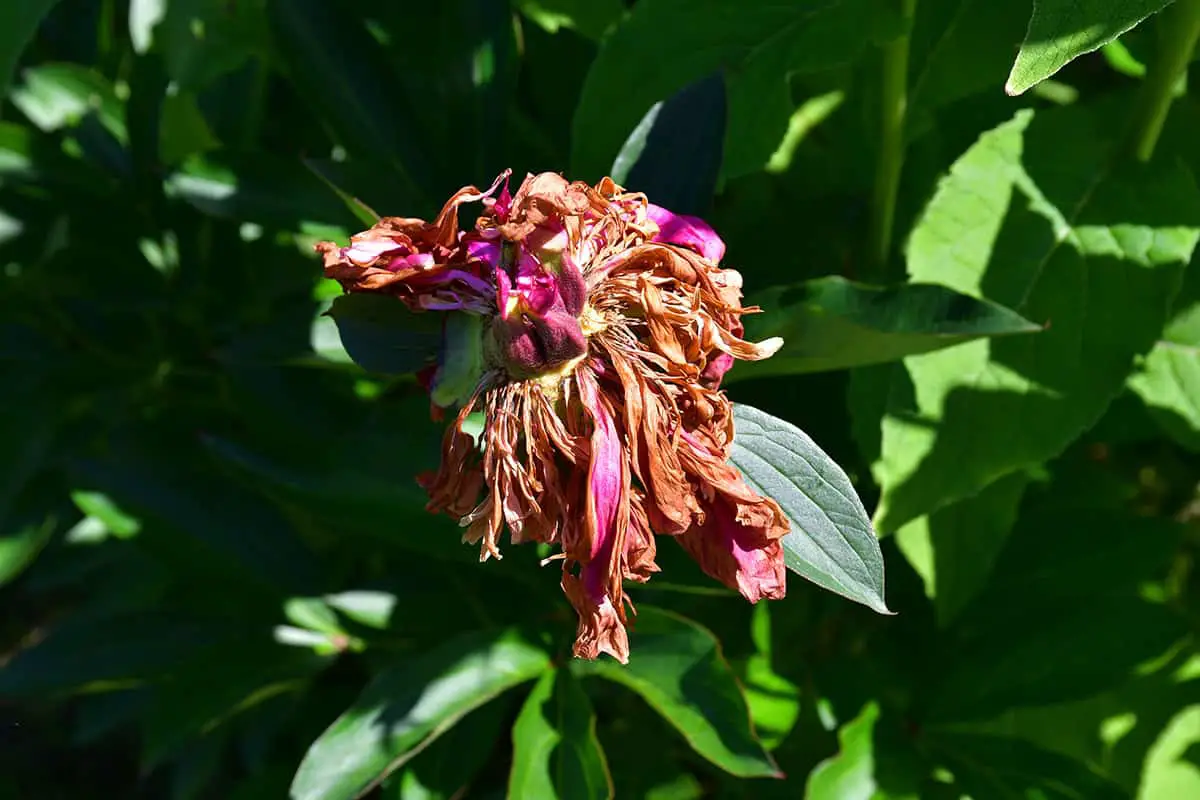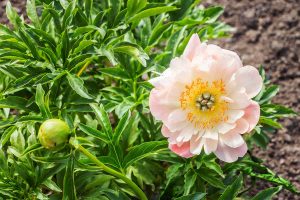You admire your peonies in full bloom, but soon, the petals start to fall, and the vibrant display begins to fade. It’s a common sight in many gardens, but knowing how to care for peonies after they bloom can keep your plants healthy and ready for the next season. Learn the best practices for post-bloom care so that your peonies remain robust and beautiful year after year.
Table of Contents
Remove Spent Blooms
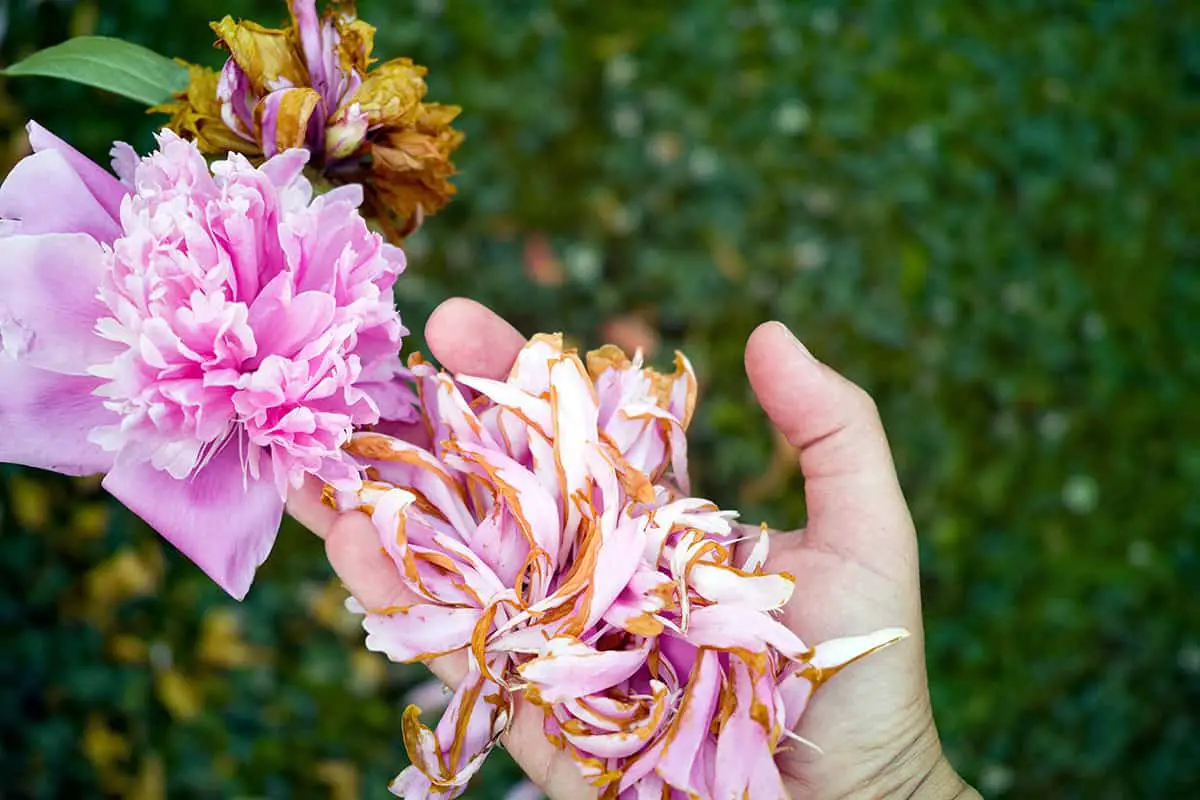
Removing spent blooms from your peonies will keep your plants healthy. This process is called deadheading. It helps to redirect the plant’s energy into stronger roots and new growth.
To start, use clean, sharp pruners. Cut the stem just below the spent bloom, above a set of healthy leaves. This prevents ugly, bare stems from sticking out.
Look for faded blooms regularly. Removing them promptly keeps your garden looking neat. Regular deadheading can also reduce the risk of disease in your peonies.
Dispose of the cut blooms and plant debris properly. Do not leave them on the ground. This reduces the chance of fungi or pests affecting your plants.
After the blooms are gone, enjoy the beautiful foliage of your peonies. Their lush leaves can provide an attractive backdrop in your garden. Keep removing any new spent blooms that appear. This will ensure your peonies remain vibrant and healthy all season long.
Fertilize Lightly
After peonies bloom, it’s crucial to fertilize them lightly. Heavy feeding can harm them.
Fertilize only after blooms fade. This timing ensures nutrients go to the roots, not the flowers.
Use a balanced fertilizer, like 10-10-10, to provide essential nutrients. Apply at a rate of about one cup per established plant.
Avoid fertilizers high in nitrogen. Excess nitrogen can lead to fewer blooms next season.
Steps to Fertilize Peonies:
- Clear debris around the base of the plant.
- Sprinkle fertilizer evenly around the plant.
- Work fertilizer into the top inch of the soil.
- Water thoroughly to help nutrients reach the roots.
Important Tips:
Fertilize only once after blooming. Over-fertilizing can stress the plant.
Consider using compost as a natural alternative. It enriches soil without the risk of over-fertilization.
For peonies in pots, use a water-soluble fertilizer. This method ensures even distribution and prevents salt buildup in the soil.
Water Properly
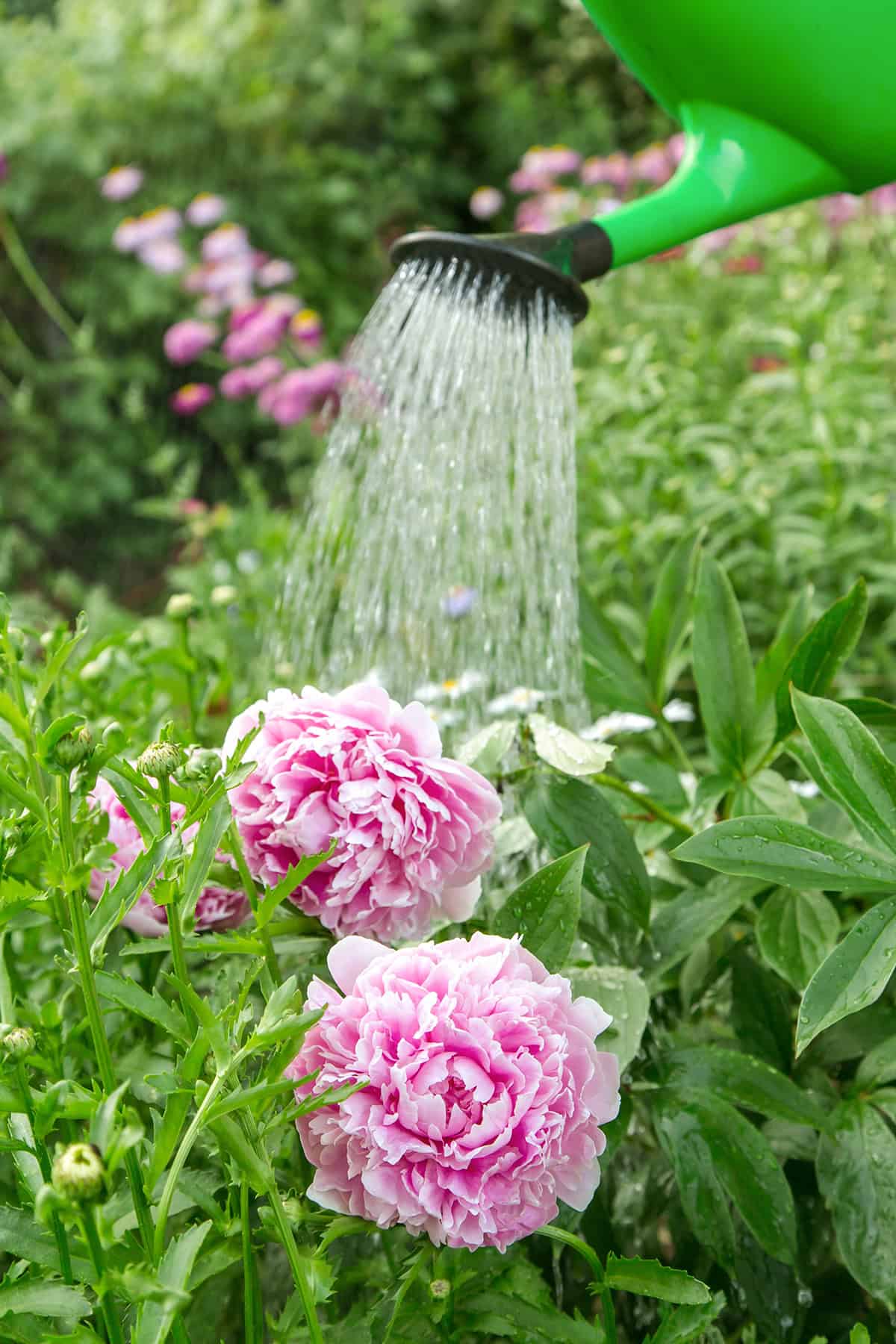
Watering peonies properly is essential for their health, especially after their blooms fade.
Water peonies deeply to ensure the water reaches the root zone. Shallow watering can harm the plants. A good rule is to water around 1 inch per week.
Use a soaker hose or drip irrigation. These methods provide water directly to the roots. They also reduce the chances of disease by keeping the foliage dry.
Water in the morning to allow excess moisture to evaporate during the day. Avoid watering late in the evening as it can lead to fungal growth.
Check the soil moisture regularly by sticking your finger into the soil up to 2 inches deep. If it feels dry, it’s time to water.
Keep the soil consistently moist but not waterlogged. Peonies do not like sitting in water. Ensure your soil has good drainage to prevent root rot. A well-draining soil mix can help maintain the right moisture levels.
Mulching helps retain soil moisture. Apply a layer of mulch around the base of the peonies. This also helps regulate soil temperature and prevents weed growth.
In dry weather or drought conditions, monitor peonies more closely. They might need more frequent watering. Adjust your watering schedule accordingly to keep the plants hydrated without oversaturating the soil.
Mulch Around the Base
Mulching around the base of your peonies can help maintain soil moisture and suppress weed growth. Choose an organic mulch like wood chips or straw, and spread the mulch evenly around the base of the plant.
Keep the mulch layer about 2 to 3 inches thick. This thickness helps regulate soil temperature and reduce water evaporation. Be sure to leave a small gap around the stem to prevent rot.
In addition to moisture retention, mulching can also improve soil fertility as it decomposes. Organic mulch gradually breaks down, adding nutrients to the soil. This enhances the overall health of your peony plants.
Refreshing the mulch each year is beneficial. Remove old mulch that may harbor pests or diseases. This keeps the garden environment clean and healthy for your peonies.
Effective mulching creates a better growing environment. It benefits the overall health and longevity of your peonies.
Inspect for Pests
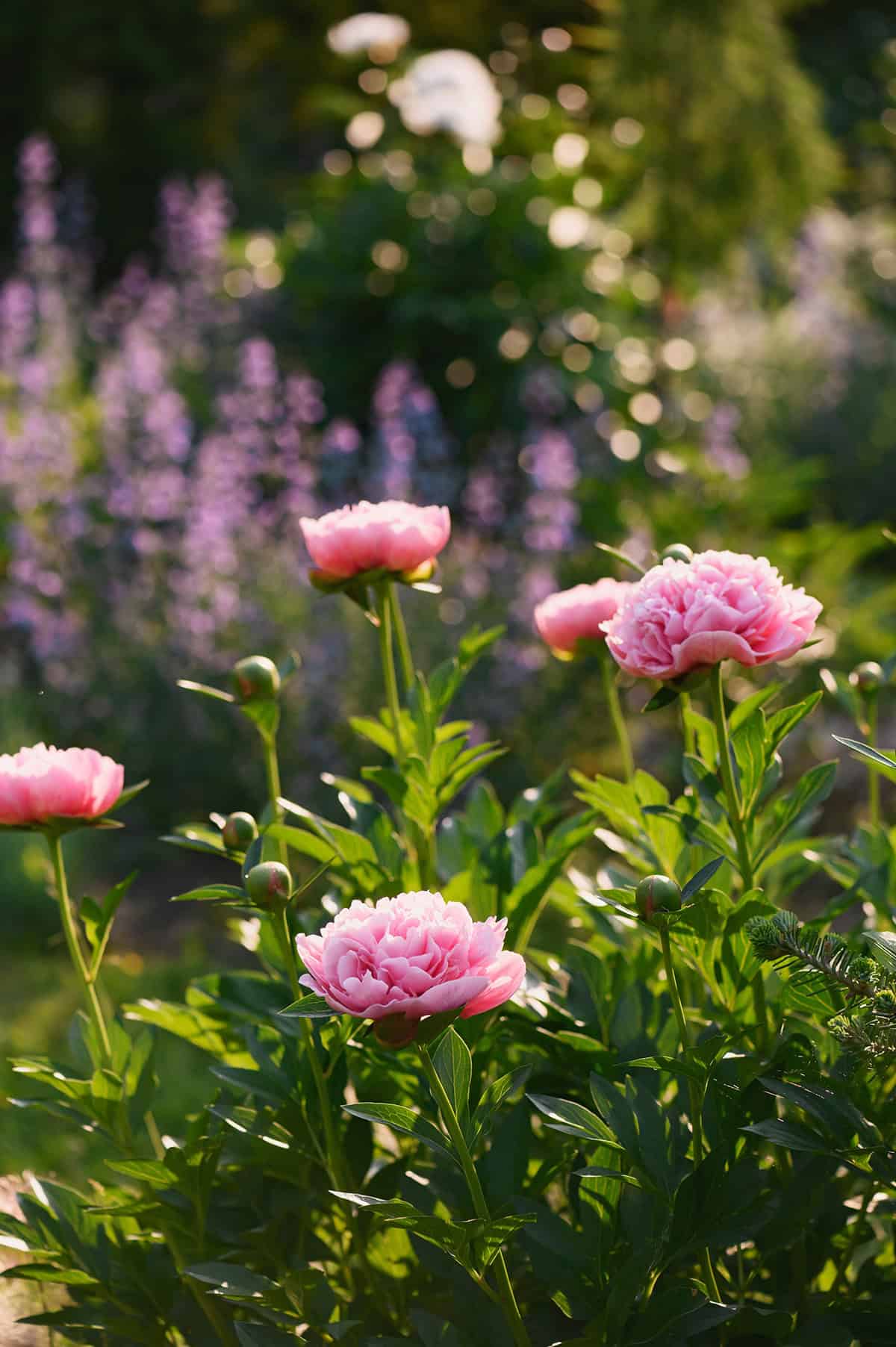
After peony blooms fade, inspect for pests. Peonies are prone to various pests that can harm the plant.
Check leaves and stems for signs of infestation. Look for small holes, discoloration, or sticky residue. Aphids are common on peonies and can cause significant damage.
Botrytis blight is a fungal disease that often affects peonies. Look for gray mold on buds and stems. Remove affected parts immediately to prevent spread.
Regular monitoring helps catch problems early. Remove debris around the plant, as it can harbor pests. Keeping the area clean reduces the chance of infestation.
Adequate air circulation is important. Avoid overcrowding plants to prevent conditions where pests thrive.
If you find pests, consider using appropriate treatments. Organic solutions, such as insecticidal soap, are effective for many peony pests. Follow instructions on any treatment product for best results.
Mulching around peonies helps maintain soil moisture and can also deter some pests. However, be sure the mulch does not touch the stems directly.
Preventive maintenance is key in pest control. Inspecting your peonies regularly is vital to maintaining their health. Always dispose of any infected plant material properly.
Prepare for Dormancy
As your peony blooms fade, it’s time to prepare the plant for dormancy. This step is crucial for ensuring healthy growth and vibrant blooms next season.
First, cut back the spent flowers. Remove the faded blooms to prevent the plant from wasting energy on seed production.
Next, leave the foliage intact. The leaves will photosynthesize and store energy for the next growing cycle. It’s important to let them die back naturally.
In late fall, after the first frost, cut the foliage down to the ground. This helps prevent fungal diseases and prepares the plant for winter.
Add a layer of mulch around the base of the plant. Mulching helps insulate the roots against extreme cold. Use organic mulch like straw or wood chips.
If needed, divide the peonies. This is best done every few years to maintain healthy growth. Dig up the root clump and separate it into smaller sections.
Store divided root clumps properly. Keep them in a cool, dry place until replanting.
Divide if Necessary
Dividing peonies can help maintain their health and bloom production. When you notice reduced blooms or overcrowding, it’s time to divide.
First, dig up the entire peony plant carefully. Make sure to remove as much soil as possible. This helps expose the pink buds, also known as “eyes.”
Once you expose the buds, separate the plant into sections. Each section should have 3-4 buds. This ensures that each new division can grow and bloom properly.
When you plant the divisions, dig a proper hole. It should be large enough to fit the roots easily. Position the buds 1-2 inches below the soil surface. This depth is crucial; deeper buds may not bloom.
After planting, water the new divisions thoroughly. This helps them settle and reduces transplant shock. Space the divisions at least two feet apart. Adequate spacing allows for healthy growth.
Remember, it may take 3-4 years for divided peonies to bloom reliably. Patience is key when waiting for those beautiful flowers to reappear.
